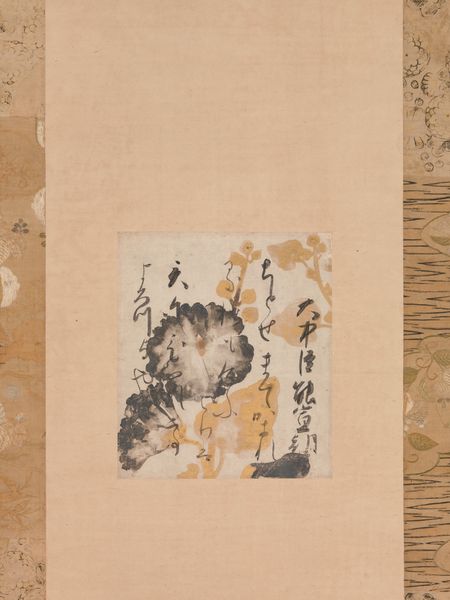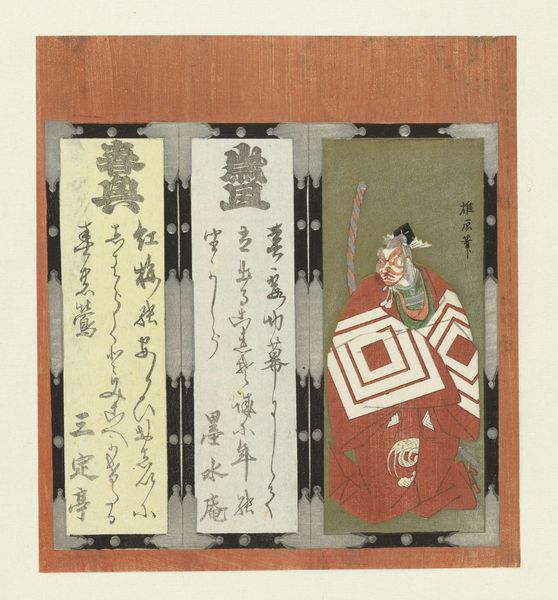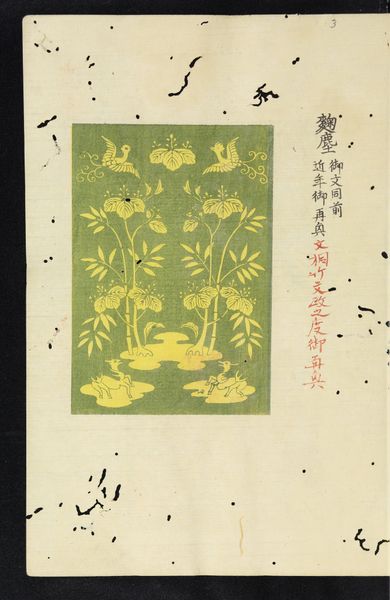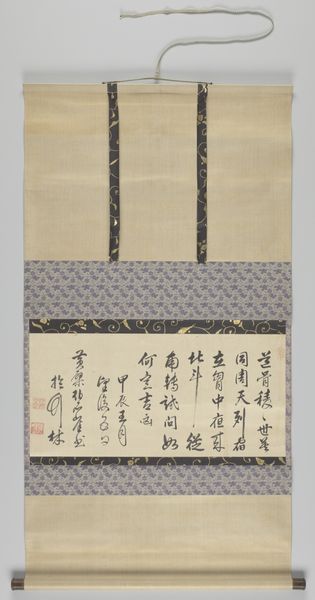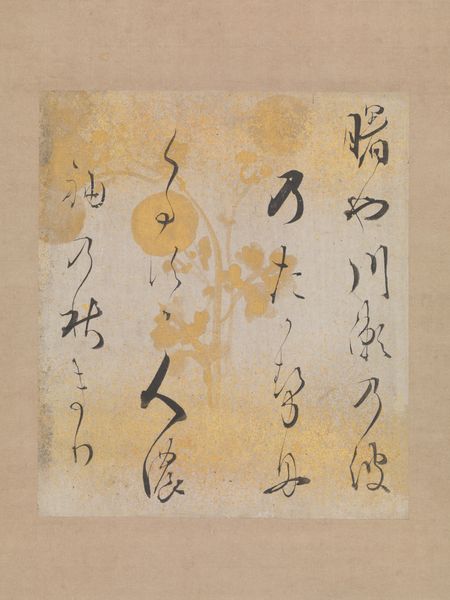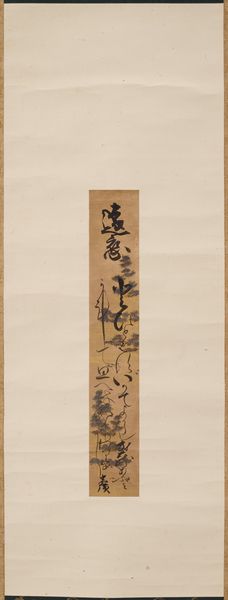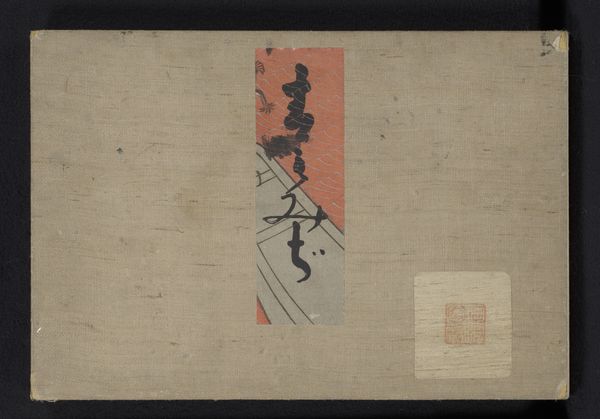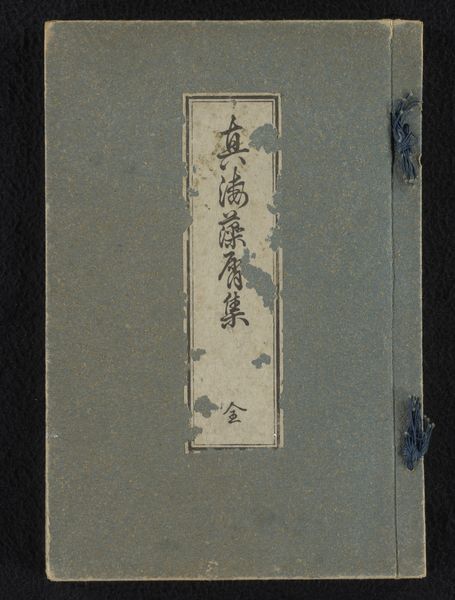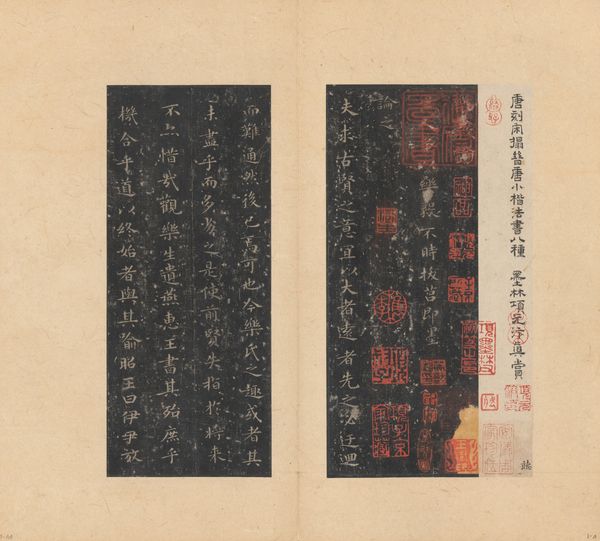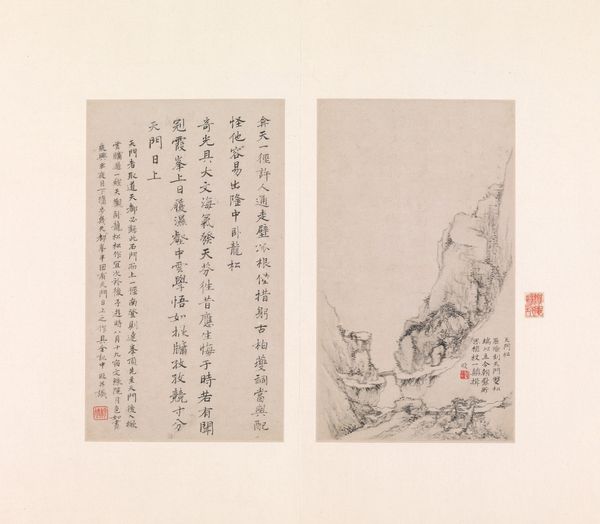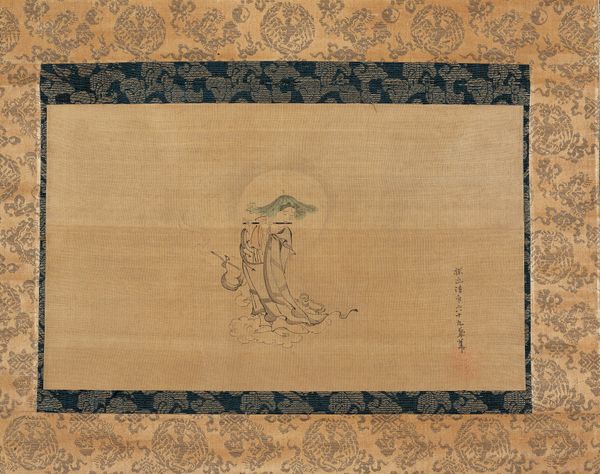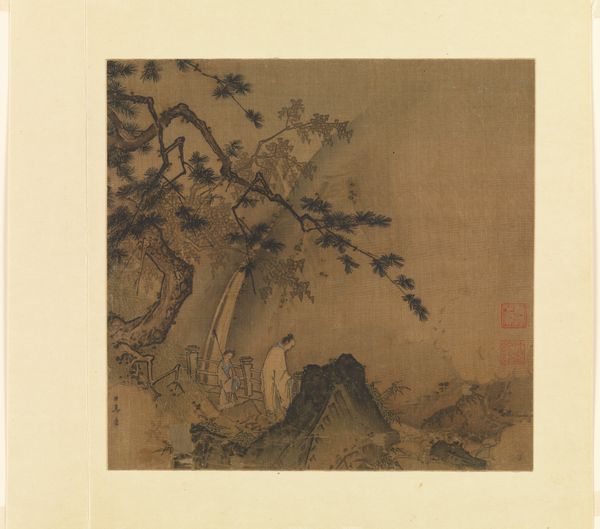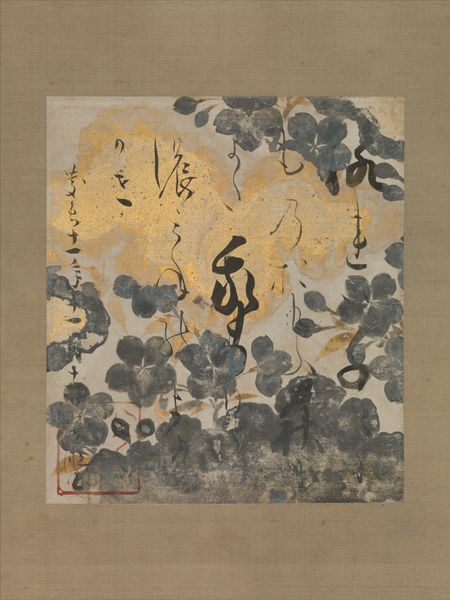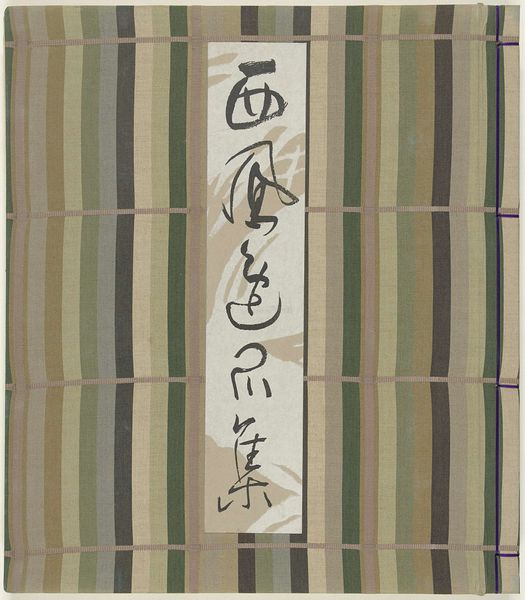
Poem by Fujiwara no Okikaze with Underpainting of Clematis 1600 - 1633
0:00
0:00
drawing, paper, ink
#
drawing
#
aged paper
#
toned paper
#
asian-art
#
japan
#
figuration
#
paper
#
ink
#
textile design
#
calligraphy
Dimensions: Image: 7 15/16 x 6 15/16 in. (20.2 x 17.6 cm) Overall with mounting: 53 x 17 15/16 in. (134.6 x 45.6 cm) Overall with knobs: 53 x 20 5/8 in. (134.6 x 52.4 cm)
Copyright: Public Domain
Curator: I find this artwork so compelling. "Poem by Fujiwara no Okikaze with Underpainting of Clematis" created sometime between 1600 and 1633 by Shōkadō Shōjō. The piece merges calligraphy with a delicate underpainting using ink on paper. What are your initial thoughts? Editor: There's a stillness to it. A certain contemplative mood that is supported by the aged paper it’s painted on. It feels simultaneously fragile and enduring. The clematis gives a grounding imagery to an artform such as caligraphy that might seem more abstract on its own. Curator: Right, let's unpack that a little. This work really exemplifies the fusion of poetic and artistic expression in Japanese art during that time. Shōjō was deeply influenced by Zen Buddhism. Calligraphy itself was a form of meditation, of expressing inner harmony. Can you imagine that creative and mental space? Editor: Absolutely. The choice of Okikaze's poem is significant as well, situating it within the aesthetic and intellectual circles of the era. In my interpretation the use of a natural element— the clematis, in this instance – becomes something deeply intersectional. Nature intertwines, it climbs freely; as does ink in Japanese culture to write beautiful, often nature inspired, stories. It feels connected, at home. Curator: And that brings up the visual language of the piece: The ink wash of the clematis creates a subtle backdrop, almost a ghostly presence behind the bold strokes of the calligraphy. This was intended to be seen in specific settings. Works like this often adorned tea rooms or studies. Spaces designed for introspection. It's amazing how artistic production like this shapes our history, by preserving it for posterity. Editor: You’re spot on about that intention! But for me it also transcends the bounds of meditative space and reminds me how the integration of the visual and textual—poem and painting, figure and setting—invites conversation between nature, aesthetics, history, and identity, making this piece a remarkable window into the social, cultural, and intellectual landscape of its time. Curator: Well said. It’s amazing how even centuries later, this delicate piece still manages to resonate. Editor: Exactly, and hopefully sparks dialogue as well.
Comments
No comments
Be the first to comment and join the conversation on the ultimate creative platform.
